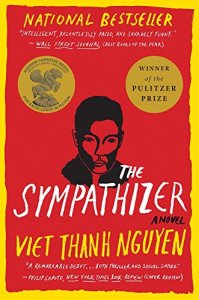
Tipping the Velvet is actually sexual innuendo that you can mime with a tongue and a glance at your lady parts. Ahem. In case anyone wondered. Structured in three parts, it is a bildungsroman following Nancy Astler through three relationships and six career changes (oyster girl, dresser, performer, “renter”, kept mistress, housekeeper/babysitter), because every relationship deserves a new career. It makes for an absorbing read that dwells especially with great tenderness on Nancy’s formative years and first love, and paints a rich picture of an imagined London in the 1890s — one in which a lesbian community thrives, albeit in the undercurrents, because London is colourful and vast enough to accommodate the unconventional. As a bildungsroman however, Nancy’s character feels too heavily guided by instinct to yield development at a satisfactory enough level.
[some spoilers, if you don’t want to know who she ends up with]
I loved Part I — Nancy’s intense infatuation with Kitty is rendered in so precious a way that anyone who has been — tentatively! doubtfully! — in love would feel for her, for the utter admiration she expresses for Kitty, for her acceptance of undertaking the load of unrequited love as long as she is spending her time by Kitty’s side. The darker side of being a lesbian is also to wrestle with the default assumption that other people are attracted to the opposite sex, intensifying the anxiety of infatuation. But also: the selflessness of Nancy’s love, that is willing to upend life as one knows it, with no expectation of return! To the extent of lacking self preservation, Nancy’s selflessness stands steady through the book, most notable in the absence of resentment towards Zena, despite the heinous circumstances Zena leaves her in. I think it is this trait that makes her eventual match more right than the previous two — her acts of service for Florence, even before she realises her feelings for her, find an equal in Florence’s kindness.
Nancy’s tendency of self immolation is perhaps also the driving factor for what looks like a life driven by reaction, empty of forward-planning, because to do that you need a stronger conception of your self and goals that set your desires against another’s. The only decision she makes, that doesn’t feel like it was done in the heat of an impulse, is the one at the end when she rejects Kitty, and it was only at that point when she realised that Florence was not just a stand-in for Kitty. I.e., without that external impetus, she would have just gone on thinking she was still hung up over her first love! Nancy never attempts to process her feelings to find closure, or make any sort of resolution that is not a result of someone else’s will. It is this absence of concrete decision-making that makes Tipping the Velvet ultimately unsatisfying in its depiction of a process of growth; that lone decision at the end is too little and flimsy to stand as significant change.
As a sexy novel: part II is there for your prurient curiosities, involving strap-on leather dildos, and gives you a sense of being exclusively included in the seamy underside of a city that you can believe exists even as you have never been privy to. The world-building, the gliding prose, and the preciousness of first love make this a 4/5 for me.
Rating: 4/5
— Tipping the Velvet (Sarah Waters, 1998)



